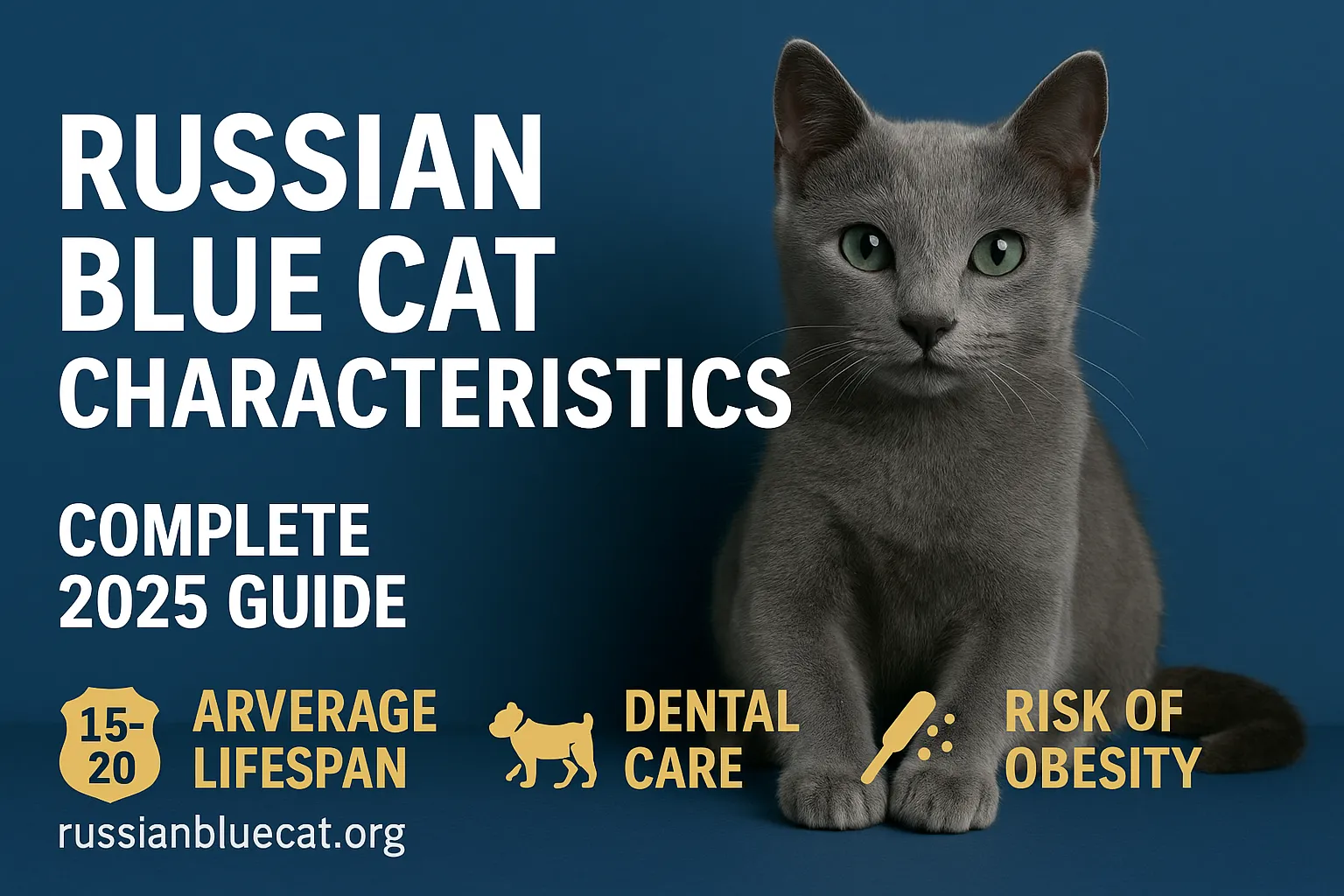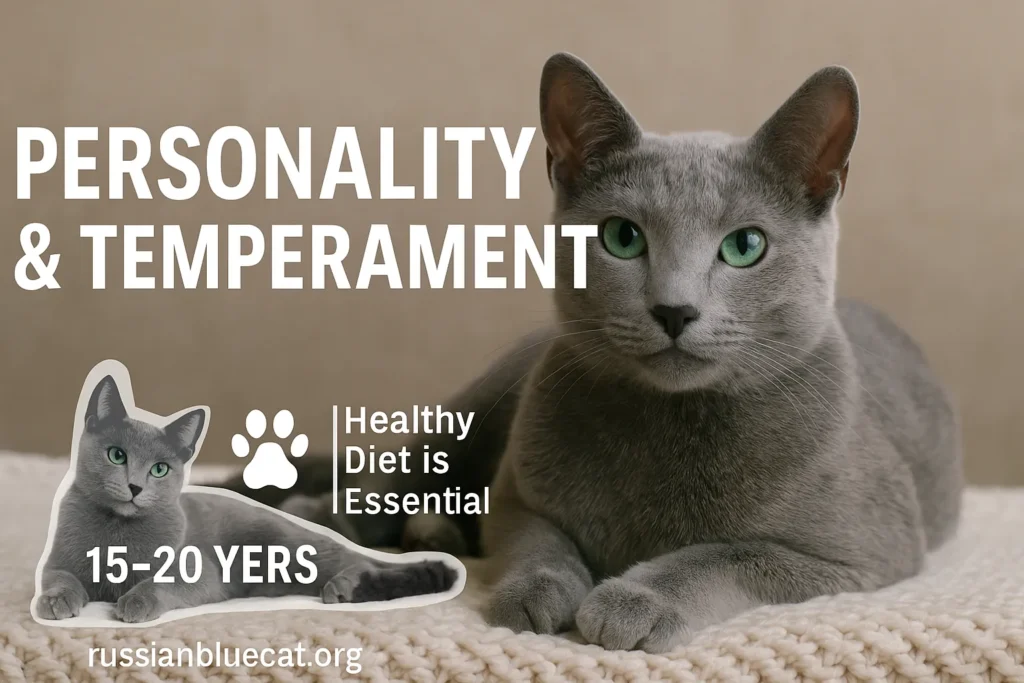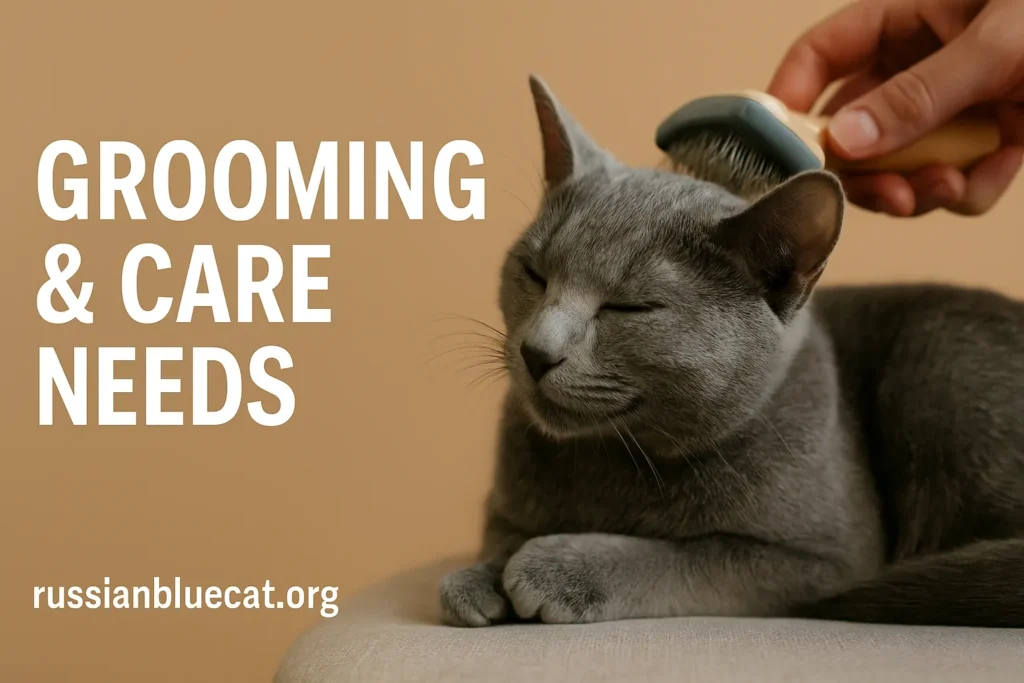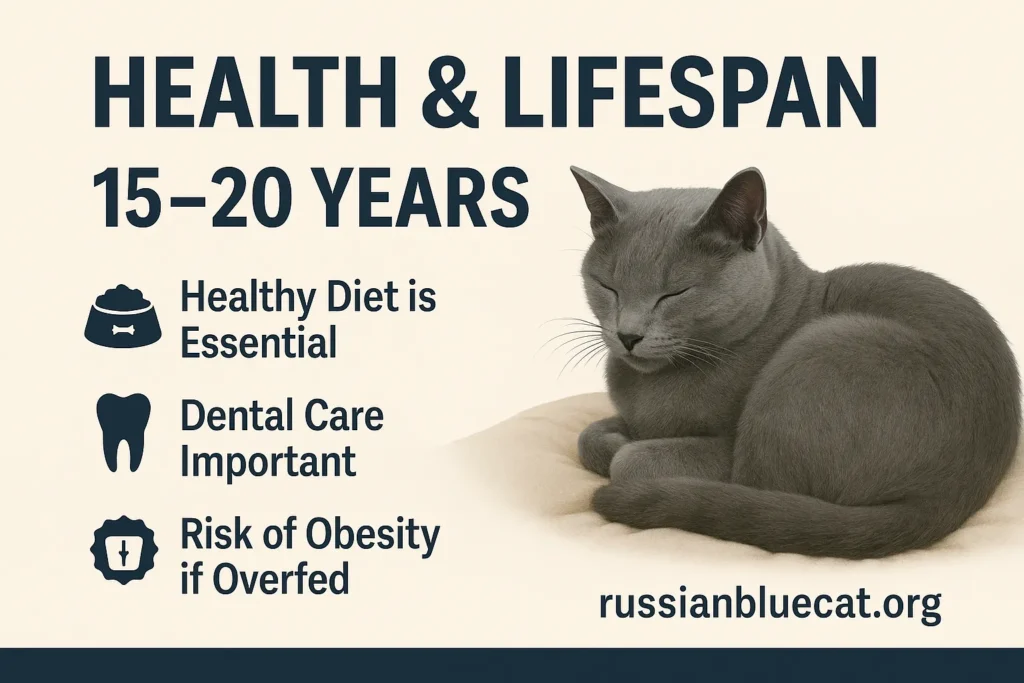9 Fascinating Russian Blue Cat Characteristics Every Owner Loves

Introduction
Beautiful, enigmatic, and loving the Russian Blue Cat has been revered for its silver-shimmering coat and piercing green eyes for centuries. But more than looks, this breed possesses a special combination of characteristics that have made it one of the world’s most popular pets.
Learning about Russian Blue Cat characteristics is crucial before the family brings one home. This information includes everything history and temperament to grooming, lifespan, health, and daily maintenance to assist with deciding if this elegant cat is suitable for your household.
History and Origins of the Russian Blue

The Russian Blue Cat originated in Arkhangelsk, Russia, where it developed to resist the cold northern climate. Its double coat is a natural development to resist cold winters.
- Folklore: These cats were thought to be symbols of good fortune and protection in Russian tradition, and they were kept in nurseries to protect babies from evil spirits.
- Arrival in Europe: They were brought to Britain by sailors during the 1800s. In 1875, they made their first appearance in London’s Crystal Palace cat shows, enchanting viewers with their distinctive blue coat.
- Modern breeding: The Russian Blue today was bred and perfected in Britain and Scandinavia, where the emerald-colored eyes and radiant coat were retained as defining characteristics.
A combination of history and myth surrounds the Russian Blue, not only making it a pet, but a cultural icon.
What Are the Principal Russian Blue Cat Characteristics?
Russian Blue Cats are medium, muscular but lean cats recognized by:
- Coat: Double-layer, dense, short fur with silver-blue sheen and velvety texture.
- Eyes: Full-developed bright emerald-green eyes by adulthood.
- Build: Athletic, elegant build weighing 7–12 pounds.
- Expression: Minutely upturned mouth that forms a natural “smile.”
These characteristics together provide the Russian Blue with an aristocratic but affable face.
Russian Blue Cat Personality and Temperament

Faithful Companions
Russian Blues are very devoted, sometimes becoming attached to just one or two family members. They will shadow their preferred humans through the house, watching silently or sleeping in close proximity.
Intelligent and Curious
They’re very smart, able to learn routines, identify voices, and even play fetch. Puzzle toys and interactive games are necessary to keep them cognitively active.
Gentle but Reserved
While loving to family members, they are reserved with strangers. They are nervous and prefer quiet introductions.
Quiet and Calm
In contrast to chatty breeds, Russian Blues are quiet. They reserve gentle meows and purrs for exceptional use and whisper to their human with subtle messages. Check our detailed guide on Russian Blue Cat Personality .
Russian Blue Cat Size and Build
- Weight: 7–12 pounds (slightly heavier in males).
- Height: 9–11 inches high at the shoulder.
- Body Type: Lean, fine-boned but muscular athletic, not heavy.
- Movement: Delicate and light on feet, described most often as similar to ballet dancers moving.
Russian Blue Cat Lifespan
Russian Blues are famous for living a long time. Properly cared for, they tend to live 15–20 years. They are among the longest living purebred cats, a measure of their strong genes and resilient nature.
Are Russian Blue Cats Hypoallergenic?
Yes, Russian Blues are frequently termed hypoallergenic since they shed less of the Fel d 1 allergen the protein substance causing most cat allergies.
But “hypoallergenic” does not equal allergy-free. Severity of sensitivity differs with the individual, but numerous allergy-susceptible owners say they observe less reaction with Russian Blues than with other cats.
Russian Blue Grooming Needs

- Brushing: Weekly brushing is sufficient to shed loose hair and keep coat glossy.
- Bathing: Infrequently necessary as they’re meticulous self-groomers.
- Shedding: Moderate, with the thicker winter coats.
- Claws & Teeth: Trim and brush regularly to avoid dental illness and claw elongation.
Low-maintenance grooming compared to long-hairs.
Russian Blue Cat Health and Common Issues

Russian Blues are generally a healthy breed with fewer inherited issues than most pure breeds. Nevertheless, look out for:
- Obesity: They adore food and can overeat. Portion control is the answer.
- Dental problems: If dental care is neglected, tartar and gum disease can set in.
- Stress sensitivity: Sudden environmental or routine changes can cause loss of appetite or hiding.
With periodic vet checkups and preventive treatment, Russian Blues stay healthy and active late in life.
Feeding and Nutrition
To maintain their muscular physique and shiny coat, Russian Blues love:
- High-protein foods (wet and dry cat food).
- Balanced nutrition with taurine, vitamins, and omega-3 fatty acids.
- Portion control to avoid weight gain.
- Feedings on a schedule instead of free feeding.
A healthy diet provides for a long, active life and avoids obesity issues.
Training and Enrichment
Russian Blues are highly trainable due to their high intelligence.
- Trick training: They can be taught fetch, sit, or come.
- Puzzle feeders: Challenge problem-solving skills.
- Interactive toys: Keep them physically and mentally engaged.
- Climbing areas: Cat trees and window perches fulfill high place love.
Enrichment on a daily basis keeps boredom at bay and creates an enhanced owner-cat bond.
Russian Blue Cats in Home Life
With Children
They are tolerant with considerate children. They will remove themselves from rowdy play, but they seldom retaliate.
With Other Pets
They get along well with other dogs and cats, particularly if introduced gradually.
Independence and Routine
They are comfortable with solitary periods but enjoy routine feeding and playtime schedules. Too much up-and-down might induce stress.
Living Space
Russian Blues adjust to apartments as well as houses. Major environmental requirements are:
- Quiet, organized homes (they hate messiness).
- Indoor safe places (they’re best as indoor cats).
- Cat trees and scratching posts to exercise on.
- Window views to watch birds and entertain themselves.
Interesting Facts About Russian Blue Cats

- Given the nickname of the “Archangel Cat” for their Arkhangelsk origins.
- Their lip shape gives them a built-in smiling face look.
- Densities in their coat fluctuate by seasons denser in winter, lighter in summer.
- Most Russian Blues love fetch and water play, which is not typical for cats.
Pros and Cons of Having a Russian Blue
Frequently Asked Questions About Russian Blue Cats
Conclusion
Russian Blue Cat characteristics shiny coat, emerald green eyes, calm demeanor, intelligence, and devotion rank this breed as the most captivating feline friend. Up to 20 years of lifespan, minimal grooming requirements, and loving disposition make them alluring beauty and companionship in equal proportion.
Whether you live in a busy family household or a peaceful apartment, the Russian Blue adjusts with ease, treating you to refinement, affection, and devotion.
For official guidelines and detailed content, refer to the Cat Fanciers’ Association Russian Blue Profile.






